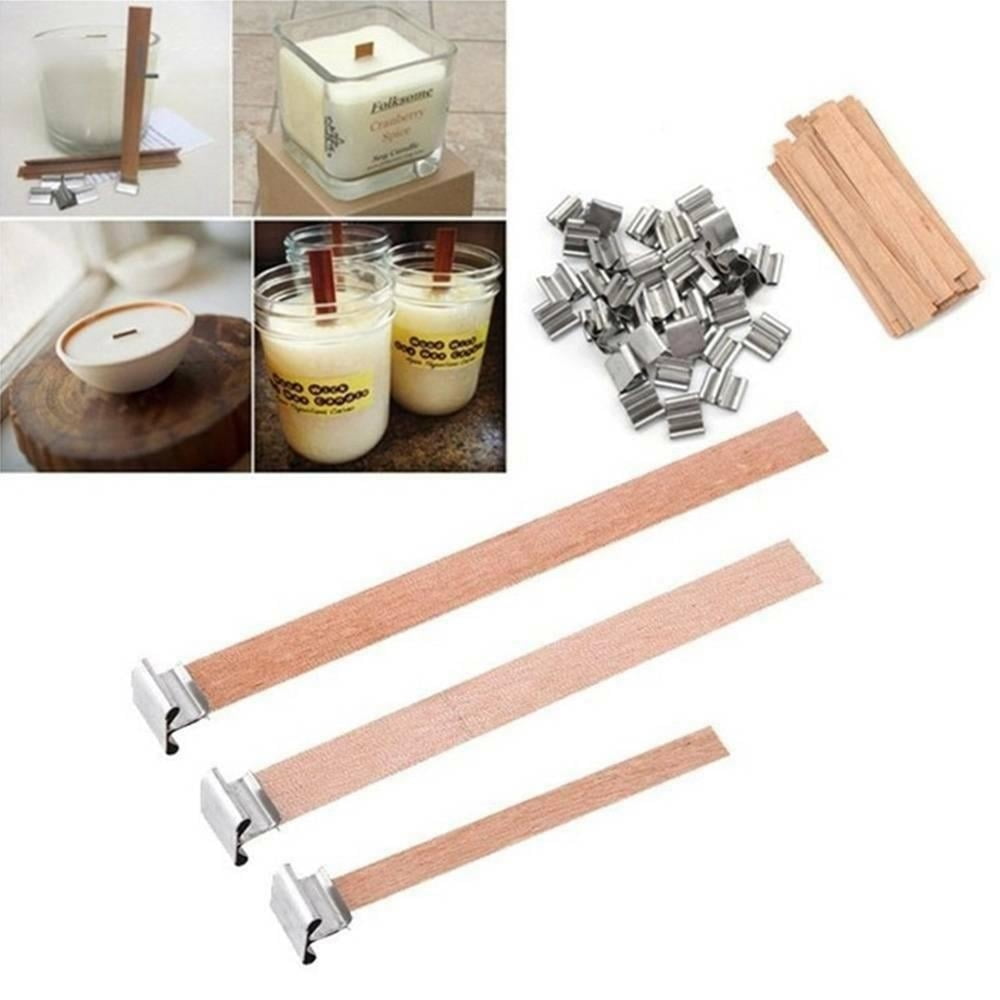Introduction
Soy and paraffin candle making are two of the most popular methods for creating handmade candles. While soy is an eco-friendly choice, it can be more expensive and is harder to work with than paraffin. So what’s the difference between soy and paraffin candles? Have a look below to find out.
The most obvious difference between these types of wicks is the wax type used during the candle making process. Soy wax is natural, renewable, and produced from hydrogenated vegetable oil ” mainly soy beans or coconut. Paraffin wax on the other hand, is derived from petroleum, so it’s not an environmentally friendly choice. Soy wax burns longer and at a lower temperature than paraffin wax so it’s considered to be safer around children and pets too.
In terms of cost, soy candles typically run higher in price than their paraffin counterparts because of the additional processing involved in creating them. The fragrances used for scenting soy candles are also more expensive since they have to stand up against low melt temperatures. On the flip side, many people prefer using soy over paraffin due to its pleasant smell when burning that allows any added scents to mix together harmoniously without clashing with each other.
As far as candle making techniques go, both soy and paraffin are fairly similar in this respect ” both must be heated until liquid before being poured into molds or jars for hardening; both require proper ventilation during burning; and both should always be burned on top of heat resistant surfaces such as glass trays or ceramic plates when used indoors. However, one key factor to remember is that soy requires about twice as long for solidifying compared to paraffin since it has a lower melting point at around 120°F (49°C). For this reason special tools such as warmers may need to be employed when speeding along this process with either type of wax flakes or cubes being employed in order increase ease of use along with safety during setup time prior to burning sessions taking place.
Manufacturing Process
Soy candles are made from a renewable resource, usually soybean oil or hydrogenated soybean oil. In the candle-making process, natural vegetable oils like soybean and coconut are combined with a high-grade food and cosmetic-grade wax (like beeswax or palm wax) to create the solid candle form. Usually, this is done by first melting the wax before adding in any essential oils or fragrance oils for scent, and then pouring the melt into molds to form individual candles. The candles harden as they cool and are then set aside until their wicks are trimmed according to desired length before they’re ready to be used.
Paraffin candles on the other hand, are created using petroleum derivatives such as gas and crude oil products. Unlike the typical vegetable oil-based method of soy candle making, paraffin waxes require chemical processes including de-oiling stages, bleaching and filtering stages. During these processes, paraffin wax is melted at high temperatures before being cooled and shaped using molds as well. Scented paraffin candles may also be subject to additional manufacturing steps (such as additives). However due to their derived components in production which contain elements that release external fumes when burned – these can be seen as an issueto those looking for an eco friendly option in home fragrance product selection.
Benefits of Soy Wax
The primary benefit of using soy wax to make candles compared to paraffin wax is that soy wax is a natural and renewable resource extracted from soybeans. It is non-toxic, biodegradable and environmentally friendly as compared to petroleum-based paraffin wax. Additionally, soy wax burns cleaner than paraffin and produces very little soot or smoke – making it healthier for your lungs. Soy candles also have an improved scent throw when burned allowing for better candle aromatherapy. The clean burning property of soy wax allows the fragrance from the oil to disperse much more evenly throughout the room providing a longer scent life.
Soy candles are also long lasting with a burn time about 50% longer than comparable size paraffin candles; in addition, they boast much better hot and cold scent throw as opposed to paraffin. As compared to traditional paraffin candles, they also hold color pigments much better as well as essential oils resulting in a more vibrant finished product. Soy also has superior adhesion properties due to its ability to melt at lower temperatures which reduces ‘wet spots’ on the finished candle surface.
Lastly, unlike petroleum products, no matter what temperature you use during manufacturing process soy remains consistent. This makes it easier for those who make their own DIY candles because there isn’t much variance in melting points like with other types of waxes; it’s less sensitive during this process which makes it simpler for anyone looking for an easy-to-follow recipe when producing their own eco-friendly creations.
Benefits of Paraffin Wax
Paraffin wax is the most popular and commonly used material for making candles. It is a relatively inexpensive form of wax, and it comes in a variety of colors and forms, allowing you to easily create the look and feel you desire for your candles. Paraffin wax also has a long burn time, meaning that even small candles made from paraffin will provide hours of warm, relaxing light.
The benefits of paraffin wax don’t end there. Paraffin wax also allows for excellent scent retention when correctly combined with scented candle oils. Because of this, scented paraffin candles will release their aroma more effectively than soy or beeswax candles. This means that the scent of essential oils or fragrances used in paraffin candles can last longer and be more noticeable when burning. Additionally, many novelty candle shapes can often be created using paraffin wax since it is easy to shape and mold into intricate details.
The main disadvantage of using paraffin wax for candle-making is that it often releases some toxic chemical combustion products deemed harmful to human health if inhaled over time. Unlike natural materials such as soy or beeswax, which are considered safe when burned under normal use conditions, some people prefer to switch to fully natural materials due to the potential risks associated with burning paraffin-based candles. In addition to this potential risk, using 100% natural ingredients generally costs more than using man-made and commercially available resources such as paraffin waxes.
Environmental Factors
When making candles, there are a variety of materials to choose from that will have different environmental impacts. Soy wax and paraffin wax are two of the most popular candle-making materials on the market, but come with different benefits and drawbacks when it comes to the environment.
Soy wax is a natural product extracted from soybean oil and is therefore often seen as the more environmentally-friendly option. It has lower melting points which makes it easier for consumers to safely handle and results in cooled candles that last longer. Furthermore, soy candles are biodegradable and so there will be no lingering wax once burned. In addition, soybean oils can be collected from an renewable source ” meaning sustainability will not be affected by its use.
Paraffin wax, however, is derived from petroleum; while this means they provide greater scent throw gave off more smoke during burning ” something that cannot be said of soy candles. This has raised complaints due to the possible health risks associated with the chemicals found in paraffin products ” including sulfur compounds and alkanes which when burned may contribute to global warming. Furthermore, since paraffin cannot be easily recycled after use, it increases waste levels significantly compared to soy candidates which lack these safety implications due to their natural origins.
Overall, it’s clear that although both paraffin and soy candles provide many varying benefits for users in terms of burning efficiency and experiencing a pleasant scent throw; based on sustainability factors alone, soy appears to offer stronger eco-friendly attributes compared to traditional paraffin products. Lastly, when purchasing any type of candle it is always advisable to ensure they have been ethically produced as this limits their potential impact on the environment even further.
Clean Burning
When considering which type of candle to make, two popular choices are soy and paraffin. There are a few important differences between the two when it comes to burning properties. For example, soy candles burn at a lower temperature than paraffin candles. This makes them safer for use in environments with children or pets, since the lower heat reduces the risk of a fire or injury. Additionally, soy candles produce fewer toxins and less soot than paraffin candles when burnt. These particles can cause irritation of the lungs and eyes, as well as staining furniture or walls if left uncleaned. Paraffin is also a petroleum-based product that is more likely to be harmful to natural resources if not properly disposed of afterwards.
Soy wax candles generally provide a longer burn time than paraffin since they have a lower melt point. Soy wax can also hold fragrance better than its counterpart while remaining softer and more pliable throughout its life cycle. Lastly, soy wax produces a richer color to the flame compared to paraffin, an attribute created by its flashpoint of 120°F which is higher than that of most other candle waxes including paraffin’s 65°F flashpoint temperature.
Overall, both options have their advantages and leave it up to your preference when deciding on which one to make for your specific needs. Taking into consideration factors such as cleanliness, burn duration and desired aroma will help inform your decision making process as you weigh each choice against one another!
Pricing
When deciding what type of candle to make and sell, it is important to consider the cost differences between soy and paraffin candles. The most significant difference in pricing between these two types of candles comes from their wax cost. Soy wax tends to be more expensive than paraffin which may influence your potential profitability. Soy candles require less wax for a given size and burn cleaner and longer than paraffin candles. This means that soy candles are likely to result in higher profits despite their higher initial cost. On the other hand, paraffin wax has lower production costs since it commences with less material and faster setup times while resulting in shorter burning times as well as sooty build-up on surfaces when burned. Therefore, you must decide if it is worth the extra cash for soy or if it would be more profitable to go with paraffin depending on the size of your business. Another factor to consider when comparing costs is the additional materials such as fragrances oils, wicks, containers/jars that are needed for each candle type. In general, finding unscented bulk soy or paraffin wax is easy but smells tend to be far harder to source in bulk at competitive prices which can quickly add up depending on quantities used. Meanwhile, wick options vary significantly across both materials which will also drastically affect results (and varying costs based on quality). Both types of products require jars or containers so resellers need to consider any additional shipping charges when shopping online versus buying locally wherever possible. Lastly, knowing the right types of scents as well as quality ingredients – like cotton vs paper wicks – can also add a lot of mystery into the process! After considering all factors, you may find one candle form more appealing than another for specific reasons enabling easier decision-making about investments into your company’s success.
Conclusion
In conclusion, there are a few major differences between soy and paraffin wax candles worth considering. Soy candles are made from a renewable source and burn longer than paraffin wax candles, although the latter have a higher melting point. Paraffin wax candles tend to produce more soot and fumes than their soy counterparts, though technically both can be safely burned indoors. Based on these factors, for buyers looking for an attractive candle with minimal pollution, soy may be the best option. Not only is it cheaper in some cases but it can also come scented or unscented depending on preference.

Welcome to my candle making blog! In this blog, I will be sharing my tips and tricks for making candles. I will also be sharing some of my favorite recipes.





